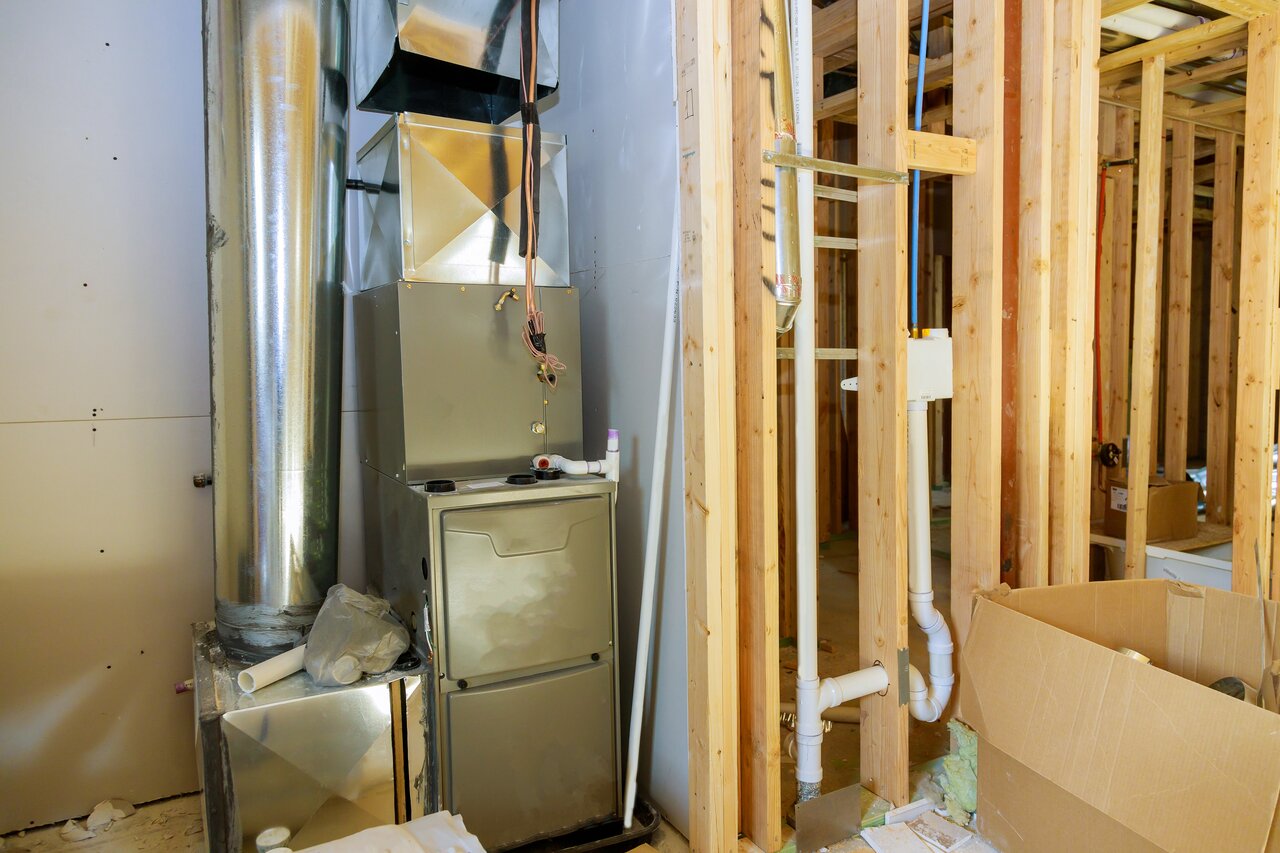When planning a new construction project, ensuring a proper heating system is vital for creating a comfortable and efficient indoor environment. Heating installation is a critical part of the construction process that requires careful planning and execution. Selecting the right heating system and ensuring it is installed correctly will have long-term implications for energy efficiency and overall comfort.
Understanding Heating Requirements for New Construction Projects
When starting a new construction project, correctly assessing the heating requirements is essential. The heating system must be designed to meet the specific needs of the building, considering factors like size, layout, and intended use. Conducting a heat load calculation helps determine the amount of heating needed to maintain a comfortable indoor temperature. This calculation takes into account the building’s insulation, window types, and local climate conditions.
Different areas of the building may have unique heating needs. For example, offices, retail spaces, and storage areas may require different levels of heating. Identifying these needs early ensures that the heating system is designed efficiently. It also helps in deciding whether to use a centralized heating system or multiple smaller units.
In addition, energy efficiency should be a key consideration. An energy-efficient heating system reduces operational costs and minimizes environmental impact. Modern heating systems offer various energy-saving features, such as programmable thermostats and high-efficiency components. By understanding the heating requirements of the new construction project, you can choose a system that meets these needs and supports overall efficiency.
Choosing the Right Heating System
Selecting the right heating system for a new construction project is a critical decision that impacts long-term comfort and efficiency. Several options are available, including furnaces, heat pumps, and radiant heating systems. Each type has its advantages, and the best choice depends on the building’s specific needs.
Furnaces are a popular choice for their reliability and efficiency in providing consistent heat. They can run on various fuel types, such as natural gas, electricity, or oil. When choosing a furnace, consider the energy efficiency rating and the system’s compatibility with the building’s layout. High-efficiency furnaces can significantly reduce energy consumption and operating costs.
Heat pumps are another option that provides both heating and cooling capabilities. They are especially suited for moderate climates and offer energy-efficient performance. Heat pumps extract heat from the outside air or ground and transfer it indoors. This process is highly efficient and can lead to substantial energy savings over time.
Radiant heating systems provide an alternative method of heating by warming the floors, walls, or ceilings. These systems are known for their comfort and even heat distribution. Radiant heating is ideal for areas where maintaining a constant temperature is crucial, such as homes or offices. However, installation can be more complex and may require more upfront investment.
Choosing the right heating system involves evaluating the building’s heating needs, energy goals, and budget. Consulting with our professionals ensures that you select a system that meets all these criteria and provides reliable performance for years to come.
Steps in the Heating Installation Process
A successful heating installation for new construction involves several crucial steps. Each step must be performed with precision to ensure the system operates efficiently and reliably. Here’s a general overview of the process:
1. Design and Planning: Our professionals start by creating a detailed heating system design based on the building’s specifications and heating requirements. This step includes selecting the appropriate equipment and planning the ductwork or piping layout.
2. Permit Acquisition: Obtaining the necessary permits is a mandatory step before beginning installation. This ensures that the installation complies with local building codes and regulations.
3. Equipment Selection and Sizing: Selecting the right size and type of heating equipment is essential. Oversized or undersized systems can lead to inefficiency and increased costs. Our technicians ensure that the selected equipment matches the building’s heating load.
4. Ductwork and Venting Installation: Proper ductwork and venting are critical for efficient heating. Our professionals install the ducts, vents, and any required flues to ensure optimal airflow and safe operation.
5. System Installation: This involves setting up the heating unit, whether it’s a furnace, heat pump, or radiant heating system. Our technicians follow manufacturer guidelines and industry best practices for installation.
6. Electrical Connections: Connecting the heating system to the building’s electrical supply is a precise task that requires expert knowledge. Our technicians handle all wiring to ensure safety and compliance with codes.
7. Testing and Calibration: After installation, the system undergoes thorough testing to ensure it operates correctly. Our professionals calibrate the system for optimal performance and efficiency.
8. Final Inspection: A final inspection ensures that the entire installation meets quality standards and is ready for use. Any adjustments or fine-tuning are made at this stage to ensure everything runs smoothly.
Importance of Professional Heating Installation Services
Hiring professional heating installation services for new construction projects offers numerous advantages. Expertise and experience are crucial for ensuring that the heating system is correctly installed and operates efficiently. Our professionals have the training and skills needed to handle various heating systems and complex installation tasks.
Safety is another critical reason to opt for professional installation. Heating systems involve intricate components and connections that must be installed correctly to prevent hazards like gas leaks, electrical issues, or fire risks. Our technicians adhere to strict safety protocols and building codes, minimizing the risk of accidents.
Quality assurance is a significant benefit of professional installation services. Our technicians use high-quality materials and follow industry best practices, ensuring that the system is durable and reliable. They also provide warranties and ongoing support, giving you peace of mind that any issues will be promptly addressed.
In addition, professional installation can enhance the overall efficiency of your heating system. Properly installed systems run more efficiently, consume less energy, and reduce operational costs. This efficiency is particularly important for new construction projects, where long-term energy savings are a key consideration.
Conclusion
The success of a new construction project relies heavily on the careful planning and installation of its heating system. Understanding the heating requirements, choosing the right system, and ensuring professional installation are all crucial steps that contribute to the overall efficiency and comfort of the building. Each of these aspects plays a pivotal role in creating a functional and energy-efficient environment for occupants.
Professional heating installation services offer the expertise, safety, and quality assurance needed to ensure that the heating system operates reliably for years to come. Our professionals at Johnson Refrigeration Inc are dedicated to delivering top-tier heating installation services tailored to the specific needs of each new construction project.
For reliable and professional heating installation services in Blythe, CA, contact us today. Our team of experts is ready to assist with all your heating needs, ensuring your new construction project is a success from start to finish.



